Who invented the microscope?
A complete Microscope History
Like many inventions today there are disputes in origins of the
original inventors. The same dispute applies to who invented the
microscope.
Dating back to the first century when glass was first invented, the Roman's were investigating the use of glass and how viewing objects through it, made the objects appear larger.
Then, in the 13th Salvino D'Armate from Italy, made the first eye glass, providing the wearer with an element of magnification to one eye.
The earliest simple forms of magnification were magnifying glasses, usually about 6x - 10x and were used for inspecting tiny insects such as fleas, hence these early magnifiers called "flea glasses".
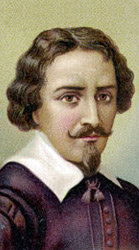 Then, during the 1590's, two Dutch spectacle makers, Zacharias Jansen
and his father Hans started experimenting with these lenses. They put
several lenses in a tube and made a very important discovery. The object
near the end of the tube appeared to be greatly enlarged, much larger
than any simple magnifying glass could achieve by itself.
Then, during the 1590's, two Dutch spectacle makers, Zacharias Jansen
and his father Hans started experimenting with these lenses. They put
several lenses in a tube and made a very important discovery. The object
near the end of the tube appeared to be greatly enlarged, much larger
than any simple magnifying glass could achieve by itself.
Their first microscopes were more of a novelty than a scientific tool since maximum magnification was only around 9x and the images were somewhat blurry. Although no Jansen microscopes survived, an instrument made for Dutch royalty was described as being composed of "3 sliding tubes, measuring 18 inches long when fully extended, and two inches in diameter". The microscope was said to have a magnification of 3x when fully closed, and 9x when fully extended.
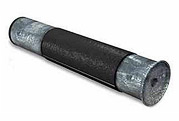 Although ordinary magnifying glasses are basically a simple
microscope, when we speak of the invention of the microscope, we really
mean the "compound microscope". Compound microscopes feature two or more
lenses, connected by a hollow cylinder (tube). The top lens, the one
people look through, is called the eyepiece. The bottom lens is known as
the objective lens. So today, when we say "microscope," we really mean
"compound microscope".
Although ordinary magnifying glasses are basically a simple
microscope, when we speak of the invention of the microscope, we really
mean the "compound microscope". Compound microscopes feature two or more
lenses, connected by a hollow cylinder (tube). The top lens, the one
people look through, is called the eyepiece. The bottom lens is known as
the objective lens. So today, when we say "microscope," we really mean
"compound microscope".
There is a lens called "the objective" which produces a primary magnified image. Then there is another lens called "the eyepiece" or "ocular," which magnifies that first image. In actual practice, there are several lenses used for both the objective and ocular, but the principle is that of two-stage magnification.
It is believed that Zacharias Jansen's father, Hans, helped him build the first microscope in 1595. Zacharias wrote to a Dutch diplomat, William Boreel, about the invention. When the physician of the French king inquired about the invention in the 1650's, Boreel recounted the design of the microscope.
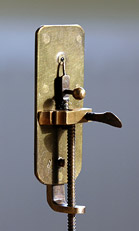 It was Anton van Leeuwenhoek (1632-1723), a Dutch draper and
scientist, and one of the pioneers of microscopy who in the late 17th
century became the first man to make and use a real microscope.
It was Anton van Leeuwenhoek (1632-1723), a Dutch draper and
scientist, and one of the pioneers of microscopy who in the late 17th
century became the first man to make and use a real microscope.
Van Leeuwenhoek achieved greater success than his contemporaries by developing ways to make superior lenses, grinding and polishing five hundred and fifty lenses to make his new lens tube that had a magnifying power of 270x and could view objects one millionth of a meter (other microscopes of the time were lucky to achieve 50x magnification).
Van Leeuwenhoek made many biological discoveries using his microscopes. He was the first to see and describe bacteria, yeast plants, the teeming life in a drop of water, and the circulation of blood corpuscles in capillaries. During a long life he used his lenses to make pioneer studies on an extraordinary variety of things, both living and non living, and reported his findings in over a hundred letters to the Royal Society of England and the French Academy.
Van Leewenhoek's work was verified and further developed by English scientist Robert Hooke, who published the first work of microscopic studies, Micrographia, in 1665. Robert Hooke's detailed studies furthered study in the field of microbiology in England and advanced biological science as a whole.
Robert Hooke published Micrographia in 1665. It is his most famous work and is notable for the stunning illustrations, drawn by Hooke himself. Microphagia presents several accounts of Hooke's observations through the use of the microscope. He looked at all sorts of things (snow, a needle, a razor, etc.) with a primitive compound microscope, but his most significant observations were done on fleas and cork. He observed the fleas under the microscope and was able to observe the tiny hairs on the fleas' bodies. On the cork he saw pores. Upon examination of the pores, he decided to call them "cells"; however, he did not know he had just discovered plant cells.
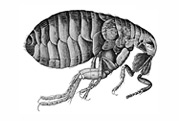 Despite these great achievements in microscopy, microscopes didn't
change much over the next 200 years, even though there were
imperfections when viewing an object due to the different refraction of
light. In the 1850s, German engineer Carl Zeiss began making refinements
to the lenses he used in the microscopes he manufactured. In the 1880s,
Zeiss hired glass specialist Otto Schott, who conducted research on
optical glass, greatly contributing to the improvement of the optical
quality of the microscope.
Despite these great achievements in microscopy, microscopes didn't
change much over the next 200 years, even though there were
imperfections when viewing an object due to the different refraction of
light. In the 1850s, German engineer Carl Zeiss began making refinements
to the lenses he used in the microscopes he manufactured. In the 1880s,
Zeiss hired glass specialist Otto Schott, who conducted research on
optical glass, greatly contributing to the improvement of the optical
quality of the microscope.
We should also mention Ernst Abbe, who was hired by Zeiss to improve the manufacturing process of optical instruments, which back then was largely based on trial and error. In a long and fruitful collaboration, Abbe carried out theoretical studies of optical principles, improving the understanding of the optical quality of a microscope.
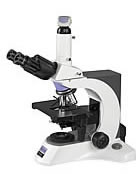 With the advancement of technology and improved optics, the microscope as we know it today came into being.
With the advancement of technology and improved optics, the microscope as we know it today came into being.
The theoretical minimum size able to be viewed by an optical microscope is 200nm (as defined by Abbe), since optical microscopes are only able focus on objects that are at least the size of a wavelength of light (usually, a wavelength of around 550 nm is assumed).
An electron microscope, in contrast, can magnify images thousands of times smaller than a wavelength of light.
Dating back to the first century when glass was first invented, the Roman's were investigating the use of glass and how viewing objects through it, made the objects appear larger.
Then, in the 13th Salvino D'Armate from Italy, made the first eye glass, providing the wearer with an element of magnification to one eye.
The earliest simple forms of magnification were magnifying glasses, usually about 6x - 10x and were used for inspecting tiny insects such as fleas, hence these early magnifiers called "flea glasses".
Zacharias Jansen and the first compound microscope
 Then, during the 1590's, two Dutch spectacle makers, Zacharias Jansen
and his father Hans started experimenting with these lenses. They put
several lenses in a tube and made a very important discovery. The object
near the end of the tube appeared to be greatly enlarged, much larger
than any simple magnifying glass could achieve by itself.
Then, during the 1590's, two Dutch spectacle makers, Zacharias Jansen
and his father Hans started experimenting with these lenses. They put
several lenses in a tube and made a very important discovery. The object
near the end of the tube appeared to be greatly enlarged, much larger
than any simple magnifying glass could achieve by itself.Their first microscopes were more of a novelty than a scientific tool since maximum magnification was only around 9x and the images were somewhat blurry. Although no Jansen microscopes survived, an instrument made for Dutch royalty was described as being composed of "3 sliding tubes, measuring 18 inches long when fully extended, and two inches in diameter". The microscope was said to have a magnification of 3x when fully closed, and 9x when fully extended.
 Although ordinary magnifying glasses are basically a simple
microscope, when we speak of the invention of the microscope, we really
mean the "compound microscope". Compound microscopes feature two or more
lenses, connected by a hollow cylinder (tube). The top lens, the one
people look through, is called the eyepiece. The bottom lens is known as
the objective lens. So today, when we say "microscope," we really mean
"compound microscope".
Although ordinary magnifying glasses are basically a simple
microscope, when we speak of the invention of the microscope, we really
mean the "compound microscope". Compound microscopes feature two or more
lenses, connected by a hollow cylinder (tube). The top lens, the one
people look through, is called the eyepiece. The bottom lens is known as
the objective lens. So today, when we say "microscope," we really mean
"compound microscope".There is a lens called "the objective" which produces a primary magnified image. Then there is another lens called "the eyepiece" or "ocular," which magnifies that first image. In actual practice, there are several lenses used for both the objective and ocular, but the principle is that of two-stage magnification.
It is believed that Zacharias Jansen's father, Hans, helped him build the first microscope in 1595. Zacharias wrote to a Dutch diplomat, William Boreel, about the invention. When the physician of the French king inquired about the invention in the 1650's, Boreel recounted the design of the microscope.
Anton van Leeuwenhoek
 It was Anton van Leeuwenhoek (1632-1723), a Dutch draper and
scientist, and one of the pioneers of microscopy who in the late 17th
century became the first man to make and use a real microscope.
It was Anton van Leeuwenhoek (1632-1723), a Dutch draper and
scientist, and one of the pioneers of microscopy who in the late 17th
century became the first man to make and use a real microscope.Van Leeuwenhoek achieved greater success than his contemporaries by developing ways to make superior lenses, grinding and polishing five hundred and fifty lenses to make his new lens tube that had a magnifying power of 270x and could view objects one millionth of a meter (other microscopes of the time were lucky to achieve 50x magnification).
Van Leeuwenhoek made many biological discoveries using his microscopes. He was the first to see and describe bacteria, yeast plants, the teeming life in a drop of water, and the circulation of blood corpuscles in capillaries. During a long life he used his lenses to make pioneer studies on an extraordinary variety of things, both living and non living, and reported his findings in over a hundred letters to the Royal Society of England and the French Academy.
Van Leewenhoek's work was verified and further developed by English scientist Robert Hooke, who published the first work of microscopic studies, Micrographia, in 1665. Robert Hooke's detailed studies furthered study in the field of microbiology in England and advanced biological science as a whole.
Hooke's Micrographia
Robert Hooke published Micrographia in 1665. It is his most famous work and is notable for the stunning illustrations, drawn by Hooke himself. Microphagia presents several accounts of Hooke's observations through the use of the microscope. He looked at all sorts of things (snow, a needle, a razor, etc.) with a primitive compound microscope, but his most significant observations were done on fleas and cork. He observed the fleas under the microscope and was able to observe the tiny hairs on the fleas' bodies. On the cork he saw pores. Upon examination of the pores, he decided to call them "cells"; however, he did not know he had just discovered plant cells.
 Despite these great achievements in microscopy, microscopes didn't
change much over the next 200 years, even though there were
imperfections when viewing an object due to the different refraction of
light. In the 1850s, German engineer Carl Zeiss began making refinements
to the lenses he used in the microscopes he manufactured. In the 1880s,
Zeiss hired glass specialist Otto Schott, who conducted research on
optical glass, greatly contributing to the improvement of the optical
quality of the microscope.
Despite these great achievements in microscopy, microscopes didn't
change much over the next 200 years, even though there were
imperfections when viewing an object due to the different refraction of
light. In the 1850s, German engineer Carl Zeiss began making refinements
to the lenses he used in the microscopes he manufactured. In the 1880s,
Zeiss hired glass specialist Otto Schott, who conducted research on
optical glass, greatly contributing to the improvement of the optical
quality of the microscope.We should also mention Ernst Abbe, who was hired by Zeiss to improve the manufacturing process of optical instruments, which back then was largely based on trial and error. In a long and fruitful collaboration, Abbe carried out theoretical studies of optical principles, improving the understanding of the optical quality of a microscope.
Modern compound microscopes
 With the advancement of technology and improved optics, the microscope as we know it today came into being.
With the advancement of technology and improved optics, the microscope as we know it today came into being.The theoretical minimum size able to be viewed by an optical microscope is 200nm (as defined by Abbe), since optical microscopes are only able focus on objects that are at least the size of a wavelength of light (usually, a wavelength of around 550 nm is assumed).
An electron microscope, in contrast, can magnify images thousands of times smaller than a wavelength of light.